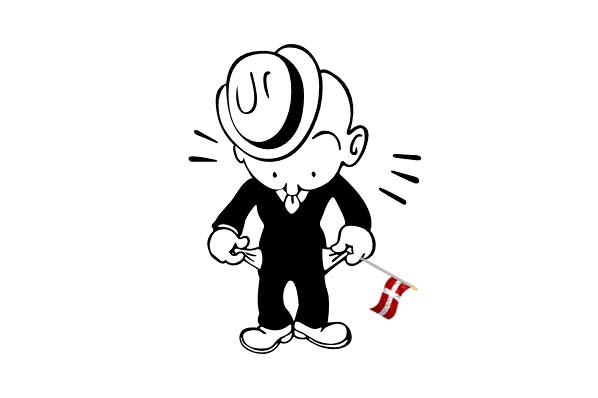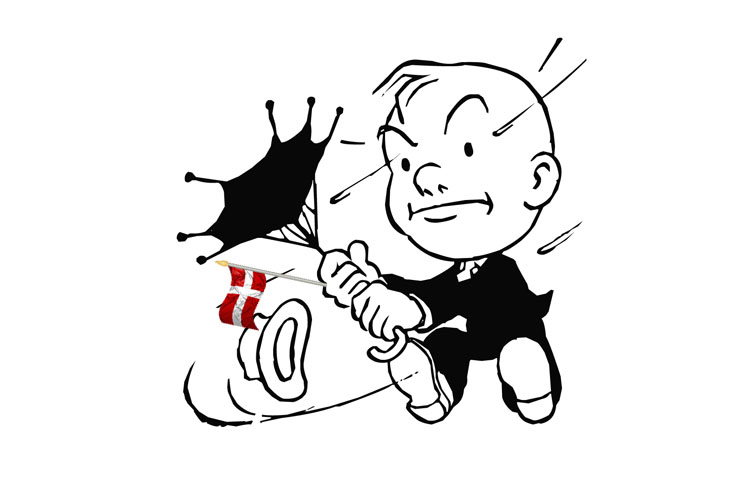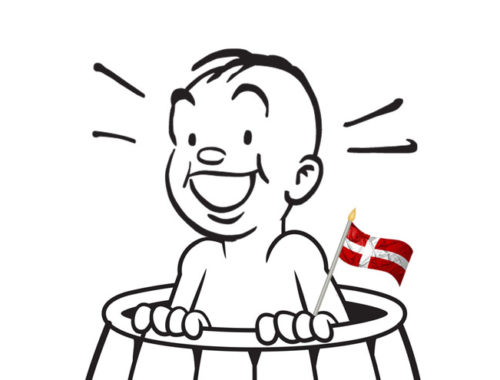When you get your first pay slip from a Danish company, the first thing you’ll probably notice is how small it is. What you thought would be your income in Denmark will have been diminished by Denmark’s world-champion income taxes.
Understanding your Danish taxes can be tricky, however, because they are divided into so many different parts.
Understanding your Danish taxes
The most important two lines on the pay slip are brutto, which is what your employer is paying you, and netto, which is what you’ll actually get to take home. In between will be several lines of taxes you must pay.
The national government levies a labor market contribution called the AM-bidrag, as well as bundskat (bottom tax) and if you earn a comfortable income, a topskat (top tax). (There used to be a “middle tax”, too, but this was abolished a few years ago.)
Then your municipality, or kommune, levies its own kommuneskat. Different municipalities have different tax levels: in Copenhagen, for example, the independent municipality of Frederiksberg is well-known for having lower kommuneskat than the city around it.
You’ll also be assessed health tax (sundhedsbidrag) to support the Danish national health system, and a small church tax (kirkeskat), which goes to support the Danish state church and its pretty buildings.
If you’re not a Christian and don’t want to pay the church tax, you can go to the church office for your søgn (diocese) and sign a statement saying you are not a believer.
Note that non-believers cannot be married in a Danish state church (unless they marry a believer) and will not receive a funeral blessing if they are so unfortunate as to die in Denmark.
Some helpful deductions from income taxes
A few items are deducted from your income before tax is assessed. You get a basic personal deduction (personfradrag), and your union fees and A-kasse contributions are deducted too.
Much of this will be done automatically for you, since the unions send in their membership information directly to the tax authorities. When you see your final tax form for the year – your årsopgørelse – the deductions will already be there.
Other deductions you may have to enter yourself. While interest payments on loans from Danish banks are automatically deducted, interest payments to foreign banks may not be.
Transport costs for people who have a long trip to work or need to work away from their home base can also be deductible. You might need help from your HR department or an accountant to properly calculate these deductions.
Don’t forget that Danish taxes are supposed to be paid on your income from anywhere in the world, not just your income in Denmark.
Indirect taxes
In addition to direct taxes on your income, there are plenty of indirect taxes in Denmark, too. The one you’ll pay nearly every day is MOMS, which is a sales tax or value-added tax of 25% that has already been added to the price of most items. (A few things, like health services and postage, are exempt from MOMS.)
You’ll also be paying “green taxes” on your electricity and water bills, plus tax on fuel if you drive a car. Purchasing a new car means a tax of 150% on some luxury models, which is why the first thing Danes often do when they move outside the country is buy a really fancy car.
If your income changes, tell the tax people
At the end of each year, the tax department will send you a forskudsopgørelse, an outline of how much money they expect you to earn in the year ahead and how much taxes you will pay each month.
If you earn more than that, you’ll be liable for extra taxes; if you earn less, you’ll get some cash back after the tax year is over.
Should you suddenly find yourself earning a lot more, it’s a good idea to contact the tax people so they can increase your monthly payment. Otherwise, the bill at the end of the year could be ugly.
You can change your monthly tax payments online, as well as get other tips from a friendly tax employee. As demanding as the Danish tax system can be, it’s relatively well-run and easy to navigate.
And don’t cheat on your taxes: in Denmark, paying your “fair share” of social welfare costs is the closest thing to a contemporary national religion.
Buy Kay’s books about Denmark on Amazon, Saxo, Google Books, Apple Books, Barnes & Noble Nook, or via our webshop.
Image mashup copyright Kay Xander Mellish 2025
Read more:
How to handle a Danish business meeting
What to wear to work in Denmark: Quiet colors, quality cut and fabric
Your first day at work in Denmark: Handshakes, passwords, and several people named Mette
Trailing spouses and working in Denmark
Motivating Danish employers: Tips for foreign managers
Networking in Denmark: 5 useful tips for making Danish business contacts
Secrets of socializing with your Danish colleagues
The Danish art of taking time off
Your free daily banana and five weeks off: Job benefits in Denmark
Why job titles aren’t that important in Denmark
The Danish job interview
Job search in Denmark: Your Danish cover letter plus LinkedIn plus two magic words
Job hunting in Denmark: Putting together your Danish CV
Fine-tuning your approach to the Danish job market
Finding a job in Denmark: Some tips from my experience
Is joining a union a waste of money? And what is the difference between a union and an A-kasse?
Will I ever be promoted? Plus, how to leverage your annual review
Taking sick days in Denmark, plus how to deal with stress





